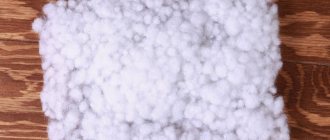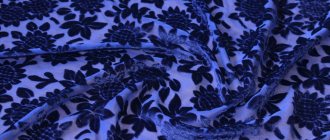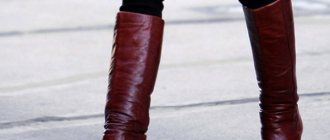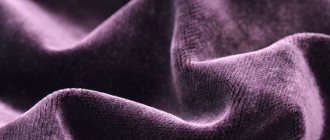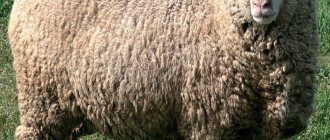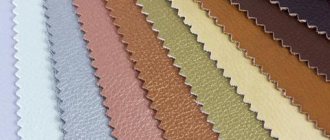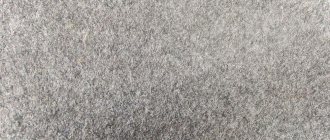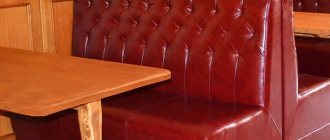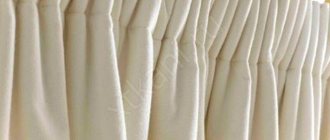The direct purpose of shoes is closely intertwined with the aesthetic role in human life. Such shoes are considered to be velor shoes, which have a very original stylish look, they are soft and comfortable, durable and affordable.
Various models will harmoniously complement fashionable evening dresses or formal business suits. In appearance it is very similar to suede, but in terms of quality characteristics there are significant differences that determine the rules of wearing, methods of care and methods for choosing velor shoes.
To make a decision: “Is it worth buying velor shoes?”, you need to carefully study all its advantages, disadvantages and features.
What is velor for shoes
Velor has a texture reminiscent of velvet, while the underside of the material remains smooth. It is used only for shoe production, so it should not be confused with the material of the same name, which is used for upholstery of furniture, clothing and accessories. Unlike fabric, shoe velor is made from leather.
The material looks very presentable due to its velvety surface. Sandals, shoes, moccasins, shoes, and boots are made from it. The material has a lot of advantages:
- looks no worse than suede;
- soft and warm;
- is inexpensive;
- durable enough;
- with careful care does not lose shape, shade and velvety;
- does not cause discomfort when worn.
However, velor quickly becomes dirty and does not tolerate moisture.
Velor or suede boots: which is better?
Choosing a suitable pair for the winter season, which will give your feet comfort and provide warmth, should be done wisely. Choose boots made of natural suede if you walk a lot on the street, use public transport, or stand at a bus stop. They are more suitable for constantly changing weather conditions than velor, which cannot be worn in severe frosts.
Warm velor boots
Feet will freeze in velor products, as they have low breathability.
It is better to spend a little more money on boots made of natural suede and fur, which will definitely warm your feet for more than one season, than to get a cheaper, but less durable analogue.
Keep in mind the fact that only natural products have these wonderful properties, so do not allow yourself to be deceived and confused when purchasing. One proven method will help you distinguish what raw materials were used in production - natural or not.
Advice! Shoes are made of natural suede, have open cuts and double-sided pile is visible on them, while velor has everything folded and stitched.
What does natural and artificial velor in shoes mean?
Velor for shoes can be natural or artificial.
In the first case, the material is made from the skins of sheep, goats, pigs, and young calves. During processing, it is ground and chrome tanned. The skin used is not of the best quality, so for better wear resistance the material is coated with a special impregnation and painted in dark colors.
To make artificial velor, synthetic fiber is used, which, due to its properties, is less susceptible to moisture, but wears out faster, loses its shape and practically does not heat.
Description and features of the material
Furniture fabric velor translates as “shaggy, fleecy.” It is anti-vandal, so it is used to cover sofas and soft wall panels. The canvas has an attractive appearance, a pleasant tactile sensation, and decorates the interior due to subtle color tints. To produce the luxury series material, both natural and synthetic components are used. The manufacturer gives preference to cotton, polyester, and viscose.
Advice! The velor for upholstering the sofa is dense. The surface should not contain gaps, scratches, or thin areas. Uniform furniture pile is denser than dress or suit pile.
Upholstery material comes with different external effects. Smooth has a uniform texture, the pile is located vertically. Printed involves a colored pattern. Smoothly colored has a uniform color and an expensive appearance.
Differences in caring for natural and artificial velor
Natural velor, unlike artificial ones, is more difficult to care for.
To return a pair of natural velor shoes to a presentable appearance, you will need to spend more effort and time. For example:
- If you want to raise the lint on leather material, you will need several brushes with different bristles and special treatment products. Shoes made of artificial material just need to be washed with water and brushed with a rubber brush.
- Natural velor will not survive washing, but artificial velor will withstand almost any wash.
- For natural velor you will need to buy only suitable products. Synthetic, in turn, can withstand the effects of even inexpensive impregnations and creams.
How does velor differ from suede and leather?
Despite the fact that suede, velor and leather are the same material, they differ significantly from each other. It's all about the origin of the raw materials and their processing.
You can study more detailed differences in the table.
| Properties | Velours | Suede |
| Raw material type | Small, cheap skins from cattle, young calves and pigs. | The best skins of small animals: deer, elk, sheep. |
| Tanning | Chrome | Fat |
| Pile direction | Does not change | A trace of a different shade remains upon exposure |
| Texture | Soft | More dense |
| Wear resistance | Average | High |
| Price | Low | High |
Products made from smooth leather, in turn, are reliable and durable. Leather shoes are comfortable and convenient, do not allow water to pass through and retain heat well, and are less demanding in care.
Each of the materials has its own advantages and disadvantages. It would be irrational to recommend which shoes to choose. Try on several pairs made from different materials. When purchasing, rely on your feelings, taking into account the basic properties of the materials.
The difference between suede
According to the quality of raw materials . To produce suede, initially the more valuable skins of deer, elk and roe deer were used for processing, and later they began to use the skin of small livestock (sheep and goats).
According to production technology. The tanning process occurs using animal fats or impregnation is done with fish oil or linseed oil.
By appearance . The double-sided fleecy layer is the main distinguishing feature of natural suede, and the back side of the velor is smooth. On the front side of velor shoes (I think) there is a backing layer of skin (bakhtarma), which is sanded and a uniform low pile is obtained. Suede has a longer pile and does not leave finger marks on it.
By price . Due to the use of elite raw materials in production, only natural animal and vegetable fats during tanning, the cost of suede shoe products is high, but the expenses for its purchase will be justified. Suede shoes will last longer than velor or nubuck shoes. It is produced using simplified technology, from raw materials of reduced quality.
In terms of wear resistance . With active wear, it retains a respectable appearance for a long time, sits on the leg, taking its shape, but does not stretch out excessively. Suede is a breathable material that will provide ventilation and will not cause allergic reactions.
According to the degree of resistance to negative natural factors. Doesn't get wet. When in contact with moisture, only the top layer gets wet, but after drying, it returns to shape. If it is heavily soiled, it can be washed in soapy water and dried properly, but velor destroys any contact with water. Water-repellent properties are given to suede by impregnation with oil and fat, which prevents water from getting inside the boot or shoe.
According to the ability to retain heat. It has heat-saving properties, so very often winter shoes are made of suede, and natural fur is chosen.
Caring for a new couple
To ensure that velor shoes last as long as possible, start caring for them from the first day after purchase.
Folk remedies
Unfortunately, not a single available product like wax or glycerin will help properly prepare a pair for wear. Velor is a particularly demanding material, so it will not be possible to carry out the treatment without special shoe products.
Professional products
First of all, visit a specialized store and buy a protective spray specifically for velor. It will protect new shoes from moisture and other external factors.
Processing method:
- Spray the product at a short distance from the material.
- Wet the entire surface of the product.
- Leave the substance on the shoes for 2-3 hours.
- Repeat the spraying procedure.
- Wait until the surface is completely dry.
- Repeat the procedure.
- Let the shoes dry completely.
After this treatment, the shoes will be less susceptible to dust and moisture.
Proper care of velor and suede shoes
You need to take care of any shoes.
The more regular it is, the longer it is used and retains its external advantages. Take the following protective measures:
- Immediately after purchase, it is worth additionally impregnating the fleecy pair with water-repellent impregnation. Apply in three layers, leaving time for drying between applications.
- A silicone suede brush will invigorate and remove dirt. If you can’t get one, you can use zero sandpaper or an eraser.
- Once a day, dry it (by stuffing it with paper), and after drying, treat it with liquid impregnation. The paper will not allow the product to deform and will help absorb excess moisture.
A dirty and unkempt pair of shoes can change the impression of your look, not for the better. Therefore, carefully choose shoes according to the season, situation, financial capabilities and clothing style. Having purchased an expensive upgrade, do not be lazy and keep it in order, inspecting it before each exit.
What to wear with an eight-piece cap
What to wear with black boots
How to care for velor shoes in winter
Warm velor boots are suitable for not very snowy and warm winters. To ensure that your shoes remain in proper condition immediately after entering the room, shake off the snow that has not yet melted from the surface. If you still fail to protect the surface from the effects of snow and reagents on the sidewalk, you will have to resort to effective methods.
Folk remedies
If you get your shoes dirty in the sand that is sprinkled on snowy sidewalks, try cleaning the dirt with a white or silicone eraser. Rub stains and stains with an eraser, and then lift the pile with a special brush.
If there are stains of unknown origin on your shoes, you can remove the stains by moistening them with turpentine or a solution of vinegar and water. In order not to spoil the surface, before the procedure, see how the material will behave under the influence of the substance in an inconspicuous area of the product.
Professional products
To prevent stains from melted snow and reagents from appearing on the surface, treat your shoes with intensive impregnations before leaving the house. If dirt does appear, use a stain remover suitable for velor, after testing it on an inconspicuous area.
general information
Velor shoes are made from natural material - velor for shoes. This type of leather is made from pig, goat or cow skins, about 1.5 years , with minor defects. Therefore, it is considered less valuable than suede, hence the lower price of shoes.
The technological process for making natural velor is simpler than that of suede - tanning with chrome or titanium salt is used here. To protect against moisture, impregnation with silicone and chrome soap . This technology softens the skin, adds elasticity and strength. At the end, the velor is sanded from the reverse side to give the surface additional smoothness.
Externally, the velor material is soft and velvety to the touch , one side has dense short pile, the other has smooth skin. This is the main difference from suede in terms of external features, in which the pile is longer and located on both sides.
Velor shoes are more intended for adult consumers , since children will not be able to strictly observe safety precautions when wearing them, they will quickly lose their shape, appearance, or simply fail.
When purchasing shoes or boots made of velor, you should take into account possible wearing conditions, follow the rules of care, and know the pros and cons.
How to care for velor shoes in summer
Shoes made of velor quickly fade in the sun, absorb dust and dirt, and if you get caught in the rain wearing velor sandals, the material quickly deforms. You definitely can’t call such shoes practical. Nevertheless, its sophisticated and presentable appearance attracts many.
If your pair gets dirty, try to restore it to its former glory. You can perform the procedure using either improvised or special means.
Folk remedies
If liquid dirt gets on the surface of the moccasins, you can remove it with a solution of laundry soap or baby powder. Please note that you cannot wet the surface; you just need to carefully treat the stains with a flannel cloth soaked in the solution.
For older and more stubborn stains, try removing them with ammonia. To do this, dilute ammonia in water in a ratio of 1:5, soak a sponge in the solution and treat the dirt.
Use any of the methods after first checking the effect of the product on an inconspicuous area. The technology for coloring the material changes over time, so the outcome can be unpredictable.
Professional products
In the line of professional products you can find:
- foam for painting and cleaning shoes made of combined materials;
- cleaners for velor shoes;
- aerosols that allow you to return shoes to their original color.
Professional cleaners come in varying degrees of penetration, so choose a product based on the level of dirt. Typically, the set of products for velor and suede includes special double-sided brushes. One side serves to clean the surface, and the other helps to lift the pile.
Please note that if you buy a color restoration substance, choose a product that exactly matches the color of the material.
How to clean velor shoes at home
You can clean velor shoes at home. It is allowed to use both store-bought and improvised products. The main thing is to stock up on the necessary tools and substances.
How can you clean velor shoes and what not?
The best cleaning products will be special aerosols and cleaners, which, in addition to their main function, tint the surface of the velor. It is not forbidden to use improvised means: laundry soap, peroxide, diluted ammonia or vinegar. Washing or treating velor products with aggressive and abrasive substances is strictly prohibited.
Which tool should I use?
In your arsenal of tools for cleaning velor, as well as maintaining its decent appearance, you should have:
- soft brushes for daily dust removal;
- stiffer brushes to remove traces of dirt;
- rubber brushes and eraser for cleaning difficult stains;
- flannel napkins for using improvised means.
You can buy all the tools at a shoe or specialty store immediately after purchasing the shoes.
Methods for removing stains and dirt from velor shoes
First of all, after choosing a cleaning method, test the substance on a small area. If the material is not deformed and remains as it was, feel free to use the chosen method.
The treatment method depends on the degree of contamination:
- Treat strong stubborn traces of dirt with a sponge soaked in purified gasoline. After this, apply talc or potato starch to the surface and leave for an hour. This will help remove any remaining substance. Then brush off the talc and lift the velor pile with a special brush.
- A solution of potassium permanganate, peroxide, tooth powder or soda will help remove the unpleasant odor. Treat with liquids very carefully, touching only the inner surface with a damp cloth. First pour the dry substances inside, and after 30 minutes remove them with a vacuum cleaner.
- Try to remove less persistent stains with ethyl alcohol. It removes dust and fresh traces of dirt well.
- You can remove fresh marks with a crust of white bread. To do this, gently rub the crust into the surface in a circular motion, and then brush off any remaining crumbs with a brush.
- If drops of moisture get on the surface of the boots and the pile becomes crumpled, steam treatment will help. Simply hold the product over boiling water for 1-2 minutes to “steam” the surface. Then dry the material with a flannel cloth, and after half an hour, comb the pile with a suitable brush.
How to wash and dry velor shoes
Washing and drying velor shoes is possible only in one case - if the material is artificial. In doing so, follow certain rules and recommendations.
Action plan:
- Remove the insoles and laces.
- Wash heavily soiled areas with stain remover.
- Place the pair in a laundry bag.
- In the machine, set the machine to a delicate wash function without spinning at a temperature not exceeding 40 degrees.
- After washing, crumple up the newspaper, place it inside the shoe and change it as it gets wet.
- Leave the steam to dry at room temperature away from heating appliances.
If you do everything correctly, the shoes will regain their original attractive appearance.
How to break in velor shoes
It is worth noting that you can increase your shoe size quite a bit. If the shoes are a maximum of half a size small, they can be adjusted to fit your feet.
First of all, do not use alcohol or other liquids to stretch velor. They will only do harm.
The best substance would be a special aerosol for velor, intended specifically for wearing shoes.
If such a substance is not at hand, use traditional methods:
- Keep the shoes over the steam for a few minutes, and then wear them around the apartment, putting a thick sock on your feet.
- Stuff the shoes with damp newspapers and leave them for several hours. Repeat if necessary.
- Fill 2 bags with water and insert into shoes. Pack a couple in a laundry bag and place in the freezer. The water will freeze and expand, thereby stretching the material. Remove the bags from the shoes only after the water has melted a little.
Proper use in interior design
Noble velor is a fabric for expensive furniture, for lush classical interiors - palace style, baroque, rococo, gothic. The upholstery on modern interior items often looks tasteless, cheap, and simple.
There are several tricks that can expand the use of upholstery material:
- Complex structural forms - a voluminous armrest, a twisted part, a decorative screed, the presence of massive parts - allow the canvas to demonstrate shine, shades, and reflection of light from different angles.
- An advantageous color for a sofa, sofa, armchair, and other representative parts of the interior is the shade of a precious stone - bright ruby, rich emerald, thick sapphire.
Tip: Luxury furniture should not be framed in anthracite black, as it will absorb light, turning the piece into a dull hole.
What not to do with velor shoes
Knowing the properties of the material, it is easy to understand what actions in relation to velor shoes are unacceptable:
- Natural velor should never be wetted, be it rain or slush outside, or washed in clean water;
- aggressive and abrasive substances will quickly cause irreparable damage to the material;
- rough brushes and hard sponges will remove dirt along with the lint;
- Strong pressure when cleaning even with a soft brush will not give the expected result, but will only ruin the shoes.
The main rule for using velor shoes is proper care. Do not allow velor shoes to come into contact with water and various chemicals. Take care of your pair regularly, using only gentle substances and suitable tools, and then you will wear your shoes for as long as possible.
